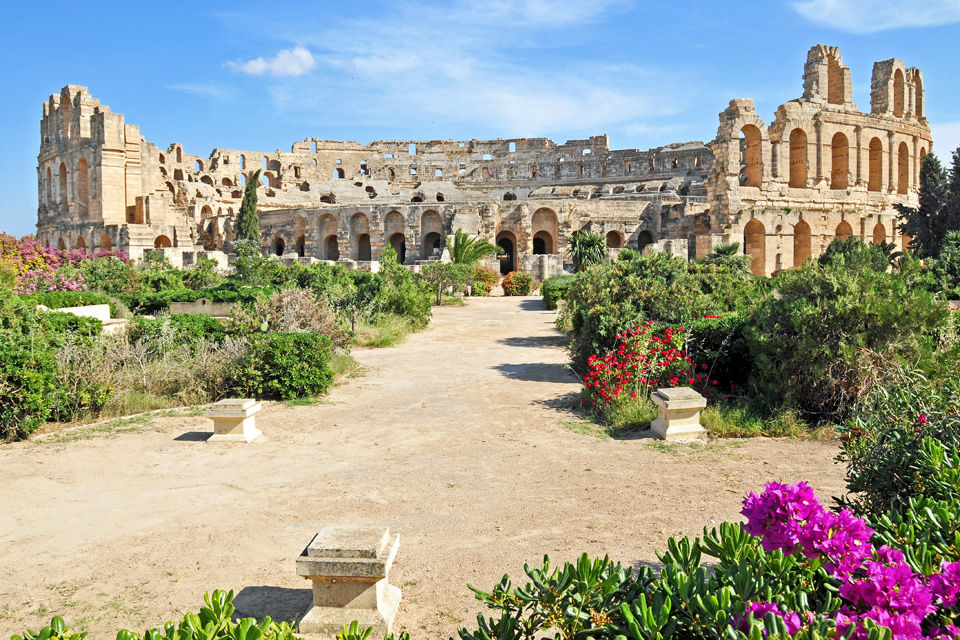





Africa is filled with ancient ruins and historic sites. These can be found all over the continent, with the most notable and popular ones sitting in North and East Africa. Some of these places are very accessible. The famous pyramids at Giza, for example, are very popular, and virtually the entire tourist infrastructure in Egypt is geared towards making it as easy as possible to visit them. Other ancient sites, like Meroe in Sudan, are more difficult to reach, but are much less crowded and, according to many adventure-seekers who visit them, more authentic. Here are the most interesting ancient sites and ruins in the Northern half of Africa.
This Ethiopian city is filled with relics from past eras. Ancient obelisks, pillars with writing in the historic language of Ge’ez and in Ancient Greek, stand all around the city, with the most impressive of these relics in a historic park called North Stelae Park. Cathedrals and chapels also stand around Aksum. Some of these are nearly 2,000 years old and according to local legend, one chapel is the resting place of the Arc of the Covenant. Aksum, sometimes romanized as Axum, also has a modern residential area, so it is one of the easiest places to visit on this list, with many accommodations available in the city for tourists.

El Djem (sometimes spelled El Jem) holds some of the most extensive Roman ruins outside of Europe. A largely intact amphitheater, thought to be the third largest stadium in the entire Roman empire, is the centerpiece of El Djem for most tourists. Several movies have been filmed here over the years, so the amphitheater will seem familiar to many people. Tiled floors and faded mosaics are still visible. The ruins of Roman villas and a marketplace can also be visited in El Djem. However, these are partially covered by desert sands. This is good because it helps preserve the buildings from erosion, but bad because few archeologists have ventured here, preferring to spend their time in the more-easily accessible area surrounding he amphitheater.

Meroe is much more difficult to reach than the pyramids of Egypt, but it can be visited as part of a day-trip for the Sudanese capitol of Khartoum. The pyramids and other ruins here are not as well preserved or as large as those in Egypt, but the area does have more of a sense of adventure and mystery surrounding it. Once a thriving city that was the heart of an East African empire, it has a story that stretches back more than 2,000 years. Experts are still deciphering the words and images that are carved into the walls at Meroe. Because less renovation work has been done here compared to Giza, some enthusiasts consider it to be a more authentic place to visit ancient ruins.


Sitting in the Northwestern part of Africa, in Gambia and central Senegal, these columns, mostly about 2 meters high, were arranged in patterns around grave sites, with many experts guessing that they are around 1,200 years old. Though they have been excavated and collectively declared a UN world heritage site, the stones can still be seen largely as they were when they were originally erected. They offer a rare glimpse into the little-known history of this part of the world.

The Ksar of Aït Benhaddou is still inhabited by a few families, though most of the people who once lived here have moved to more-modern settings. The earthen buildings still stand just as they did in the 17th Century. They were built close to one another so that they could fit inside the encircling wall and towers for defensive purposes. This layout gives Aït Benhaddou a unique, imagination-inspiring feel, with the structures seemingly coming out of the surrounding desert landscapes.

Yes, the pyramids of Giza are crowded, but they are also considered by many to be the quintessential ancient attraction. These triangular structures are even more awe-inspiring up close and the tourism infrastructure is such that you can choose to spend several days wandering around the area or see the highlights in the afternoon before heading off to see the other sites that Egypt has to offer.


